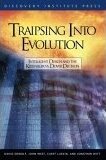The mechanism explaining the origin of a rearranging gene segment system to generate antibody diversity.
(CAUTION – I am a self confessed delusional crank with no immunology or evolutionary biology qualifications.)
As I understand it this is a summary of the best guess currently available for the origin of the gene rearranging system to generate variable antibodies.
1. A transposon became inserted either into a sperm cell, and egg cell or a very early embryo cell. Presumably at this stage it is a transposon that only becomes active in transcribed genes rather than having eukaryotic transcription control sequences. It must have initially integrated into an active gene in such a way that it could transpose when that gene was expressed. This is something that is presumably a selective disadvantage.
2. After jumping around the genome for x generations it happened to insert into an innate immune system receptor at the point where its eventual excision would cause variation in the antigen binding site and thus be an advantage to the cell. This is also presumably an exceedingly rare event.

At this point in the description the proposed pathway becomes very sketchy. By means of 4(or 5) genetic duplication events plus an incorrect recombination event we produce a set of variable antibody producing genes with heavy and light chains which fit together beautifully and a set of T-cell receptors using a similar process for a totally different function.
If this is the best that is currently available then I would agree with Behe that it is time someone got their act together or was ready to admit publically that at the moment we really have got lots of major problems explaining the origin of variable antibodies.
(Please note I am not intending to belittle Matt Inlay’s essay. I think he has done an excellent job explaining this to a non-specialist for the web. Thank you Matt!)
(Please note I am not intending to belittle the work of evolutionary immunologists comparing immune systems in different organisms and trying to put together a scheme for its evolution. I am very appreciative indeed of research immunologists. I am merely saying that this account is very sletchy indeed and for it to be convincing you need to already believe that it really did evolve without any intelligent input.)
(BTW are there different RSS sequences at the two join sites and different RAG proteins…what stops them getting muddled?)
